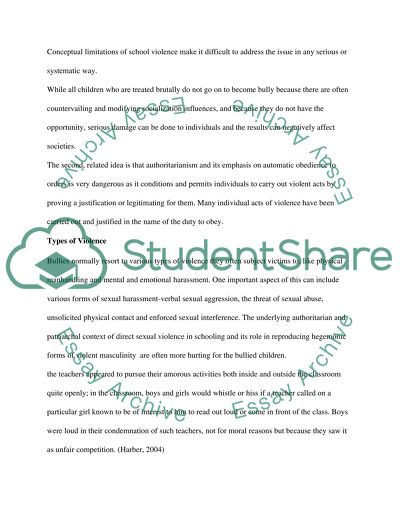Cite this document
(“Bullying at School Essay Example | Topics and Well Written Essays - 1250 words”, n.d.)
Retrieved from https://studentshare.org/miscellaneous/1533857-bullying-at-school
Retrieved from https://studentshare.org/miscellaneous/1533857-bullying-at-school
(Bullying at School Essay Example | Topics and Well Written Essays - 1250 Words)
https://studentshare.org/miscellaneous/1533857-bullying-at-school.
https://studentshare.org/miscellaneous/1533857-bullying-at-school.
“Bullying at School Essay Example | Topics and Well Written Essays - 1250 Words”, n.d. https://studentshare.org/miscellaneous/1533857-bullying-at-school.


